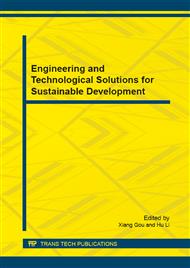p.109
p.114
p.118
p.123
p.129
p.136
p.142
p.146
p.150
XPS Analysis Pyrolytic Char of Cellulose with Different Crystallinity Based on Ionic Liquid Regeneration
Abstract:
Ionic liquid 1-butyl-3-methylimidazolium chloride ([Bmim]Cl) was used to dissolve cellulose and cellulose was regenerated from the solution by two different methods. Original cellulose (OC) and regenerated cellulose have different crystallinity. The morphological characteristic of different crystallinity cellulose was analyzed by the scanning electron microscopy (SEM). The cellulose pyrolysis experiment was performed on a horizontal tube furnace reactor and a wire mesh reactor. The pyrolytic char was prepared at 300°C with 50% char yield. Surface structure of original char and water washed char prepared from above two reactors was analyzed by the XPS. The results reveal the impact of secondary reaction between the volatile and char and crystallinity on the char structure during cellulose pyrolysis.
Info:
Periodical:
Pages:
129-135
Citation:
Online since:
November 2014
Authors:
Keywords:
Price:
Сopyright:
© 2014 Trans Tech Publications Ltd. All Rights Reserved
Share:
Citation:


